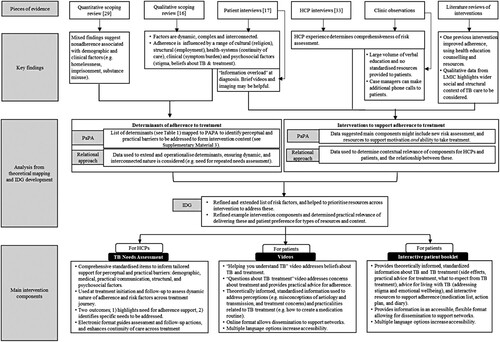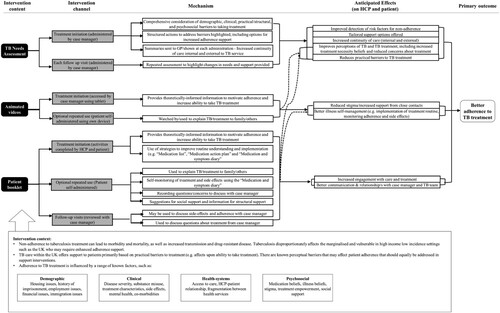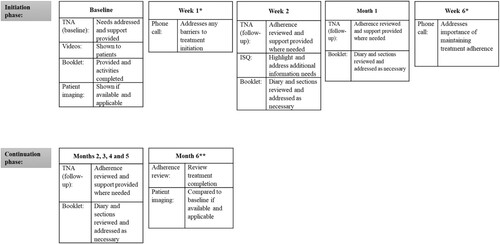Figures & data
Figure 1. Conceptual map of formative research and intervention development.Note: HCP = healthcare provider, LMIC = low or middle-income countries, PaPA = Perceptions and Practicalities Approach, IDG = Intervention Development Group.

Figure 2. Logic model for the IMPACT intervention. Note: TNA = TB needs assessment. HCP = Health care professional. Dotted lines demonstrate where anticipated effects are repeated across mechanisms.

Figure 3. IMPACT intervention component delivery across patient treatment pathway.Note: TNA = TB Needs Assessment, ISQ = Information and Support Questionnaire. *Point of touch occurs outside of standard care treatment pathway. **Month 6 is treatment completion for standard treatment. If treatment continues monthly, the TNA follow-up is completed at each session.

